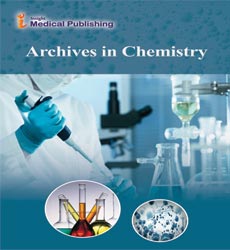Ultrasound Assisted Dispersion of Magnesium Oxide on CeMCM-41 Nanocatalyst for Biodiesel Production from Waste Vegetable Oil
Abstract
Cycles and biodiesel change came to 88.7% toward the finish of the last cycle which exhibits its critical steadiness The population growth and the development of industrialization have increased the demands for fossil fuels. A major issue of today’s world is greenhouse effect that leads to global warming, which is one of the main reasons of weather pattern changes and serious health problems. Biodiesel is a reliable alternative to fossil diesel fuel because of exclusive properties such as biodegradability, renewability, low toxicity and eco-friendly. Because of the physicochemical similarity between biodiesel and fossil diesel, it could be used in the existing diesel engine up to a certain limit, i.e., 20% but beyond that, engine modifications would be necessary. On the other hand, the biodiesel production from inexpensive feedstock instead of refined or edible vegetable oil is another effort towards sustainability aspect; since it can prevent the waste oils depletion into the nature and thereby return these useless material to the consumption cycle through green fuel production. Recently, bifunctional catalysts with both acidic and basic sites, high ratios of surface/volume and great pores developed to perform esterification and transesterification reactions simultaneously. Also, utilizing mesoporous materials as heterogeneous catalysts has been of great interest, due to high surface area, uniform and narrow distribution of pore size, well-ordered pores and significant thermal stability. Mobil Composite Material No. 41 (MCM-41) is a hydrophobic mesoporous silica that synthesized by hydrothermal method. It has a large surface area and notable thermal stability which make it a remarkable choice as support for creating active sites and producing well-dispersed metal oxides. Itrepresents a hexagonal structure of high request and extraordinary adaptability. This adaptability considers the adjustment of certain properties, for example, surface causticity, pore size, warm strength, and redox attributes, through presenting metal particles, for example, Fe, Al, Zr, Ce, etc into the structure. It was accounted for that bringing Ce4+ into MCM-41 structure, produces new Lewis corrosive destinations which improves the corrosiveness of impetus.
Open Access Journals
- Aquaculture & Veterinary Science
- Chemistry & Chemical Sciences
- Clinical Sciences
- Engineering
- General Science
- Genetics & Molecular Biology
- Health Care & Nursing
- Immunology & Microbiology
- Materials Science
- Mathematics & Physics
- Medical Sciences
- Neurology & Psychiatry
- Oncology & Cancer Science
- Pharmaceutical Sciences
